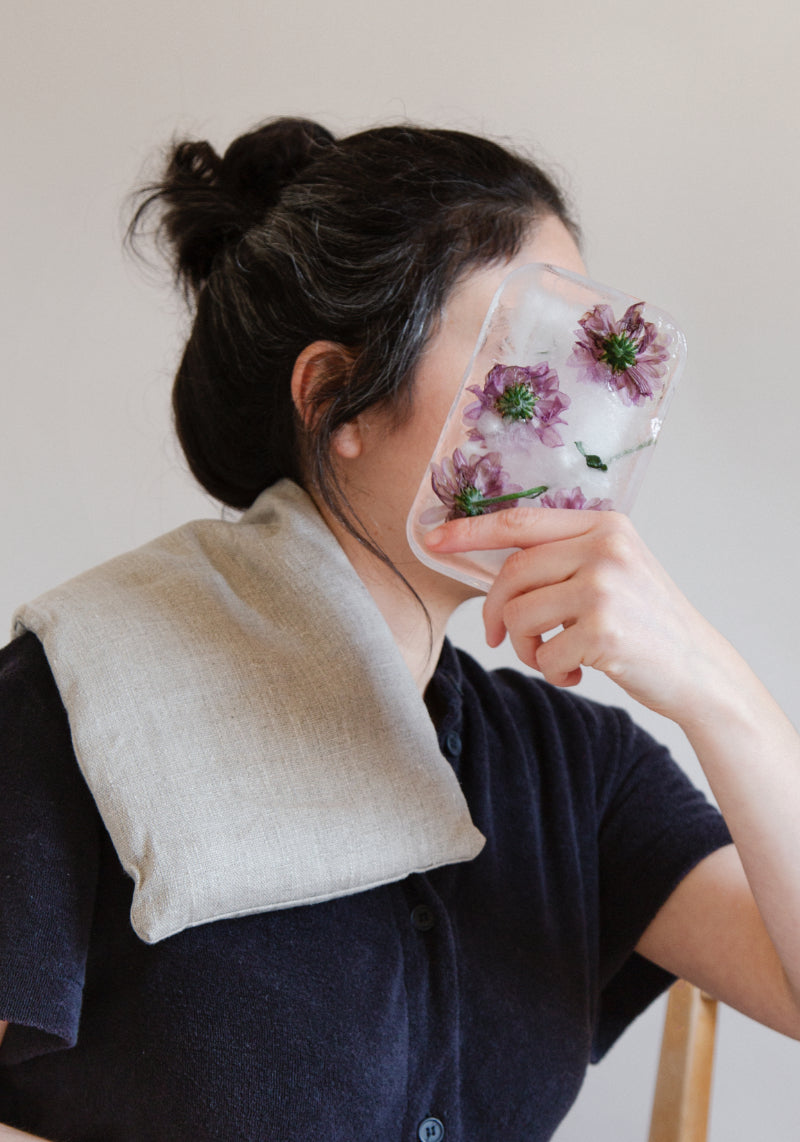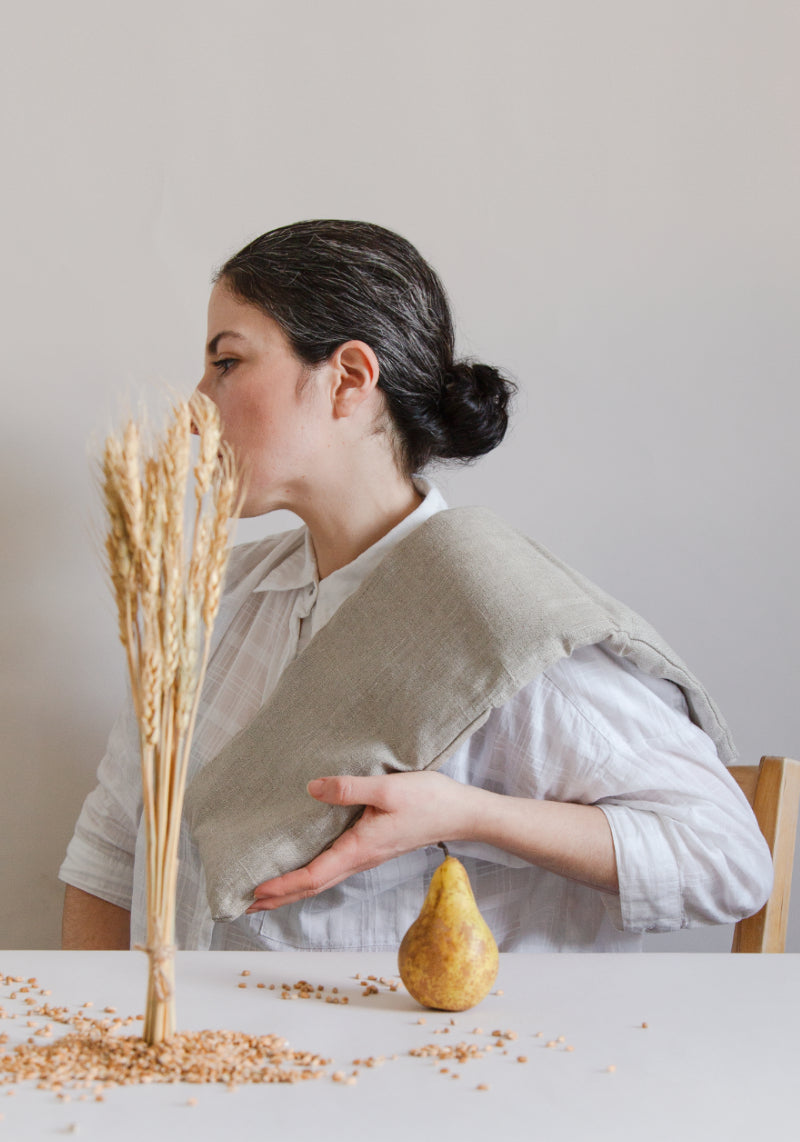Behind the Scenes: Printing Our Fabric

We travelled to Leek in the West Midlands and paid a visit to our fabric printer. Have a look behind the scenes as our popular print ‘Creatures’ comes to life using old fashioned techniques and serious skill, before being made into covers for our Wheat Bags and and Eye Pillows.
The team here is well experienced. Many of them have worked in the textile industry all their lives.
They move skilfully around the machinery like well oiled parts. Everyone and everything has a purpose. No fuss. Someone is collecting teacups for a refill and climbs atop the rotary printer in order to reach.
The rotary printer
The rotary printer is where the magic happens. Our fabric goes in one end as plain linen and comes out the other end full of pattern. It’s a joy to behold. We spend a while marvelling at the shear size of the thing whilst Lee, the owner talks us through how it works.

Creatures Yellow in Print
How it works
Without getting too technical the rotary printer uses a cylindrical screen that rotates in a fixed position. The fabric is fed through and as it travels under the rotary screen the screen turn with the fabric and prints on a continuous loop. The ink, made by Magna Colours - is fed to the screen through a bar and as the screen is turning a squeegee device pushes the ink through our design and onto the fabric. Once printed it goes directly into a large dryer and the fabric is fed onto a fabric roll.
Lee and his head printer goes to work on the machine, they move quickly whilst communicating almost wordlessly. They know each others body language well, hands move over levers at speed whilst they mimic each others movements to adjust settings. Every change on the machine has to be done in unison to ensure an even print.
A dying trade
It is a bit of a dying trade unfortunately, Chris the manager tells me whilst we look on. Digital printing is making huge leaps in advancement and offers more possibilities whilst rotary printing has been used since the 18th century and not changed much. This said, the big machine is efficient, it prints much faster than digital at 10 metres a minute.

The fabric is fed back in for curing
So why did we choose rotary?
Digital printing requires a lot of handling, the fabric has to be pre-treated and chemically washed afterwards. With rotary printing we can use our plain linen as it is and print with Magnas eco friendly water based inks. We also have a soft spot for something with a bit of history, and that requires craftsmanship.
The result of todays production is a success. The Creatures come out just as we want them in our signature deep navy and a warm yellow. Chris gives us a ride to the train station and we chat about what kind of stuff people print. Mostly tea towels he says, thousands and thousands of them a day. We also specialise in suit linings. Apparently it’s becoming a bit of a trend that grooms get a tailor made suit lining with images of the bride. Those are quite fun to make, Chris says.
We board the train back to London. With us we have a few sample metres that we are going to use to develop some exciting new products. The rest of the fabric is being sent on to our factory in Swindon, where it will be turned into covers for our Wheat Heat Packs.

Finished fabric goes onto the roll
Read more about the benefits of the wheat pillow or how you can use wheat bags for pain relief! We also have an interesting article on the sustainability of our supply chain, have a look!




